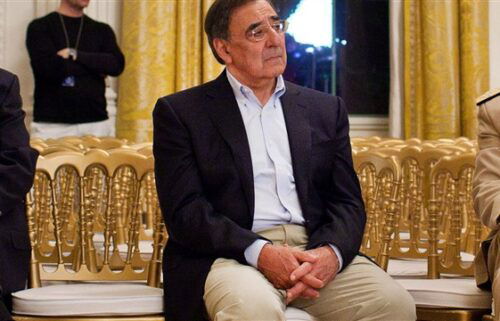Experts find human remains while searching for the 1921 Tulsa race massacre victims
(CNN) -- At least one set of human remains were found at a cemetery where experts are searching for victims of the 1921 Tulsa race Massacre, an Oklahoma state archaeologist announced Tuesday.
The remains were found at the Oaklawn Cemetery in Tulsa, Oklahoma, inside of a wood coffin and near an unmarked temporary grave marker about 3 feet underground, said Oklahoma state archaeologist Kary Stackelbeck.
The remains are still being analyzed and it's unclear whether they are from one of the victims of the massacre, she added. A possible second set of remains was found in a different location in the cemetery.
"It's a little too soon but gives me definite reason for optimism," Stackelbeck said in a news conference Tuesday.
The discovery comes just a day after the excavation resumed on Monday. City officials launched an effort to find the victims' remains in 2018 and an excavation in another area of the cemetery in July yielded no results.
This week's search was focused on two additional areas of the cemetery, including an areas known as "Original 18." Funeral home records and other documents show that at least 18 identified and unidentified victims were buried in the cemetery, city officials said.
Tulsa Mayor G.T. Bynum said he was grateful for having experts searching for the remains, which will be going through compared to funeral home and death certificate records.
"We will continue to take this investigation one step at a time, wherever it may lead," Bynum said in a statement to CNN.
As many as 300 people were killed in the massacre
The Tulsa race riot of 1921, also called the Tulsa race massacre, resulted in the death of hundreds of African American residents of the city's Greenwood district -- then a Black economic hub also known as Black Wall Street -- when a mob of White rioters looted and burned the community.
The riots were sparked by a confrontation between a Black resident and a White man among a group of angry White people demanding the lynching of a young Black man, according to historic accounts. A struggle ensued over the White man's gun and the White man was shot, prompting a mob that stormed the neighborhood.
Historians believe that as many as 300 people died after more than 1,000 homes were burned and destroyed. At the end of the violence, Black Wall Street was decimated. Historical photos show bodies of Black residents lying in the streets.
Bodies were buried by strangers in mass graves while the decedents' families remained detained under martial law, Scott Ellsworth, a University of Michigan historian who has worked on the recovery of the Tulsa riot graves for decades, said in December.
Families were never told whether their loved ones died or where they were buried, and there weren't any funerals, he added.
Mayor Bynum said earlier this year that the search for remains intends to fill gaps in the city's history and provide "healing and justice to our community."
The-CNN-Wire™ & © 2020 Cable News Network, Inc., a WarnerMedia Company. All rights reserved.



